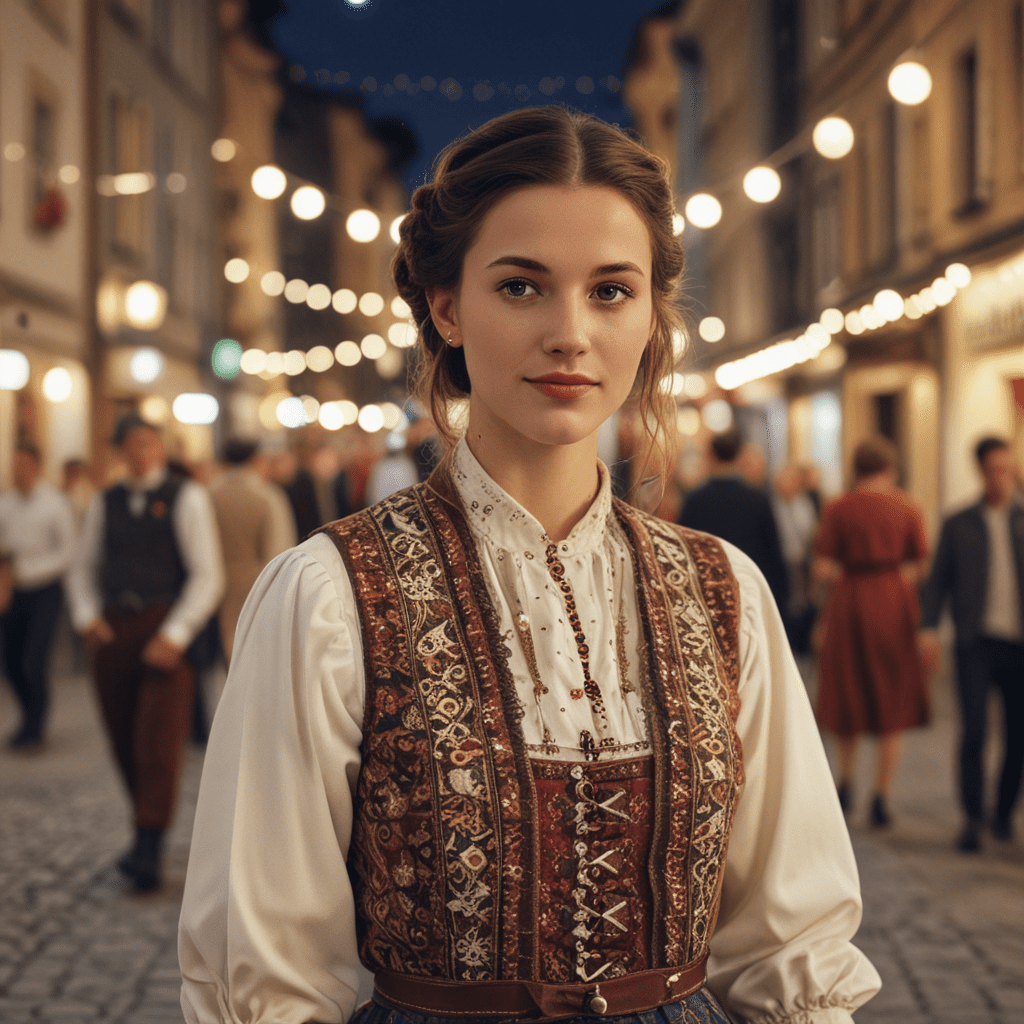
Traditional Clothing and Folklore in Austria
Austria's rich cultural heritage is reflected in its traditional clothing and folklore. These elements have played a significant role in shaping the nation's identity and continue to be celebrated in various forms today.
## Traditional Clothing in Austria
Austrian traditional clothing, known as Tracht, is a colorful and elaborate representation of the country's regional diversity. Each region has its own unique style, with distinct variations in fabrics, patterns, and accessories. Traditional clothing is often worn during festivals, celebrations, and special occasions, adding a vibrant touch to these events.
## History of Austrian Folk Dress
The origins of Austrian folk dress can be traced back to the Middle Ages. During this period, clothing served as a marker of social status and regional affiliation. Over time, folk dress evolved, incorporating influences from various cultures, including Celtic, Germanic, and Slavic. The 19th century witnessed a revival of interest in traditional clothing, which became a symbol of national pride and cultural identity.
## Regional Variations in Traditional Clothing
Austria is divided into nine federal states, each with its own distinct style of folk dress. Some of the most well-known regions include:
- Tyrol: Known for its elaborate and ornate costumes featuring leather breeches, embroidered jackets, and feathered hats.
- Salzburg: Characterized by a more subdued style with traditional dirndls for women and lederhosen for men.
- Styria: Features colorful and playful costumes with intricate embroidery and handcrafted accessories.
- Carinthia: Known for its unique "Kärntner Tracht," which includes a distinctive headpiece called the "Perlenhaube."
- Vorarlberg: Boasts a more modern interpretation of traditional clothing, with a focus on functionality and comfort.
## Materials and Craftsmanship
Austrian traditional clothing is typically made from high-quality materials such as wool, linen, and leather. The fabrics are often hand-woven and feature intricate embroidery patterns. Craftsmanship is highly valued, with skilled artisans specializing in creating unique and authentic pieces. The attention to detail and meticulous execution of traditional clothing reflects the cultural significance and artistic heritage of Austria.
Austrian Folklore
Austria's rich folklore is a vibrant tapestry of traditions, beliefs, and customs that have been passed down through generations. These traditions, which include fairy tales, legends, and myths, provide a glimpse into the country's unique cultural heritage.
Origins and Evolution of Folklore Traditions
Austrian folklore has its roots in various sources, including Celtic, Germanic, and Slavic influences. Over time, these traditions have evolved and blended with Christianity, creating a diverse and captivating body of folklore.
Types of Austrian Folklore
Austrian folklore encompasses a wide range of genres, including:
- Fairy tales: These beloved stories, known as "Märchen," often feature magical creatures, enchanted forests, and heroic characters.
- Legends: These stories are based on historical events or individuals and often contain elements of truth.
- Myths: These sacred narratives provide explanations for the origin of the world, the existence of gods, and the nature of humanity.
Preserving and Revitalizing Austrian Folklore
Recognizing the importance of folklore, Austria has taken steps to preserve and revitalize its cultural heritage. Various organizations and initiatives promote traditional storytelling, folk music, and folk dancing, ensuring that these traditions continue to thrive in the contemporary era.
The Role of Folklore in Contemporary Austrian Culture
Austrian folklore remains a vital part of the country's cultural identity, influencing art, literature, and music. Contemporary artists and writers draw inspiration from folklore to create new works that reflect the nation's rich cultural tapestry.
FAQ
What are some famous Austrian folk tales?
- The Tale of the Fisherman and His Wife
- The Little Match Girl
- Hansel and Gretel
What is the national costume of Austria?
- The Dirndl and Lederhosen
Where can I experience Austrian folklore firsthand?
- Visit open-air museums and heritage villages
- Attend traditional festivals and celebrations
Is Austrian folklore still relevant today?
- Yes, Austrian folklore continues to influence art, literature, and music, and it is actively preserved and celebrated.


